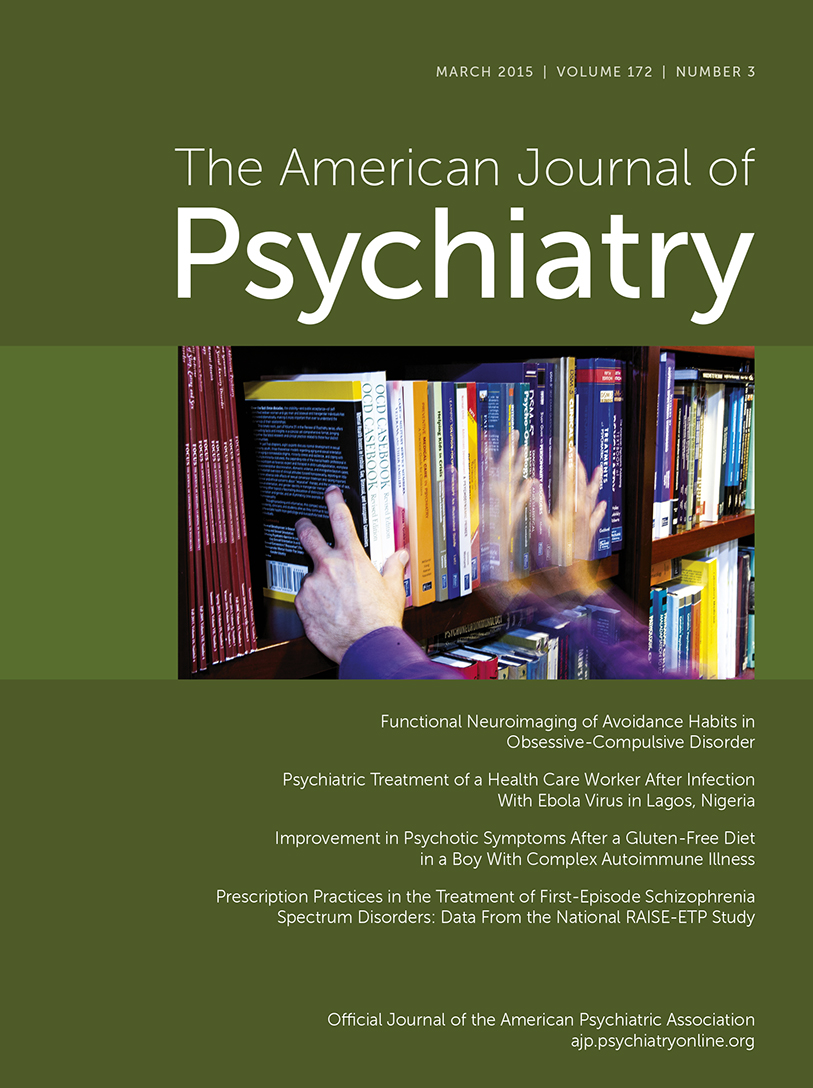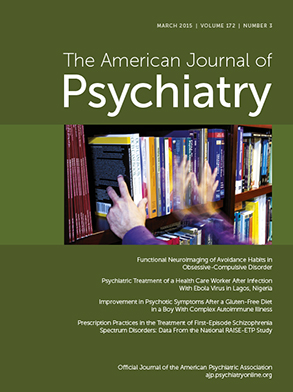Autism spectrum disorder includes a deficit in social communication as one of its underlying elements or endophenotypes. Endophenotypes are elements of a disorder that are thought to arise from a specific cause, usually a genetic variation. They are generally more widespread in families than the disorder itself, with many nonaffected members of the families expressing the endophenotype but not reaching criteria for the full clinical diagnosis. An endophenotype that is scored quantitatively in all family members has much more power to show genetic linkage in the family than the diagnosis alone, which occurs in only some of the family members. In this issue of the
Journal, Lowe et al. (
1) hypothesized that social communication deficits might serve as the endophenotype that would provide sufficient power to identify regions with inherited genetic variants that contribute to autism. Most of the genetic risk for autism is inherited (
2,
3), yet DNA sequencing projects have focused mostly on de novo (i.e., not inherited) genetic variants found in individuals with autism (
4–
8).
Lowe et al. (
1) report significant genetic linkage of two distinct regions of chromosome 8 to an autism endophenotype: the scores for all family members on the Social Responsiveness Scale, which quantitatively measures variation in autism-related social impairments. The Social Responsiveness Scale is an assessment of social interaction competence, scored by either teachers or parents, which provides a quantitative endophenotype for autism (
9). In a sample of 590 families, from the Autism Genetic Resource Exchange, with Social Responsiveness Scale scores, Lowe et al. found a novel locus on chromosome 8p21.3 that reached the criterion for genome-wide significant linkage using the combined Social Responsiveness Scale scores reported by parents and teachers (LOD [logarithm of the odds ratio]=4.11). A second locus, independent of the first, was also found at chromosome 8q24.22. The sample combined teacher and parent ratings, which were highly correlated with each other. To eliminate any possible interference from two different kinds of raters, a subset of 536 families with only the parent-reported scores was analyzed. Lowe et al. then found that the 8q24.22 locus also reached the criterion for genome-wide significant linkage (LOD=4.54).
To identify common functional genetic variants that contribute to the social responsiveness phenotype, Lowe et al. expanded the cohort to 1,652 Autism Genetic Resource Exchange families, including parent-child trios that were not informative for linkage analysis. Examination of the chromosome 8p21.3 and 8q24.22 regions failed to identify evidence for association after correction for multiple comparisons. The lack of association within the linkage regions suggests that rare variants may contribute to the autism-related social responsiveness phenotype. A limitation of the study is that the rare variants that contribute to the Social Responsiveness Scale phenotype have not yet been identified. As with most linkage studies in psychiatric disorders, the results indicate a region of a chromosome that is thought to harbor a contributing rare variant. Finding these variants will not be easy. The linked region on chromosome 8p21.3 includes 34 characterized genes; the chromosome 8q24.22 region includes 68 characterized genes. Additional targeted sequencing experiments will be required to identify the inherited rare variants.
Although the specific genes and genetic variants on chromosome 8 have not yet been identified, this type of approach has proven successful for one other genetic locus in autism. Genetic linkage studies using an autism-related quantitative language endophenotype identified
CNTNAP2 as an autism candidate gene (
10). Subsequent studies provided substantial evidence that variation of
CNTNAP2 contributes to autism risk, since both common variants and rare mutations of
CNTNAP2 were associated with autism risk (see reference
11). Genetic imaging studies further demonstrated that variations in
CNTNAP2 contribute to altered functional connectivity in the human cerebral cortex (
12). These data establish that linkage studies of autism-related quantitative endophenotypes can provide important leads to find genetic variants that contribute to the changes in brain development that underlie autism.
The chromosome 8 linkage loci identified in this study join five other genetic loci with genome-wide significant association to autism diagnosis (
13–
17). Two of these loci are also associated with quantitative social communication phenotypes in large general population samples (
18,
19), indicating that multiple genes contribute to autism-related endophenotypes. Biological studies have revealed that the functional element at one of these genome-wide significant loci (
13,
19) is a gene encoding a regulatory, long noncoding RNA,
MSNP1AS, suggesting that we will need to look beyond the exome—the 2% of the human genome that encodes proteins—to identify genetic elements that contribute to autism spectrum disorder risk (
20).

